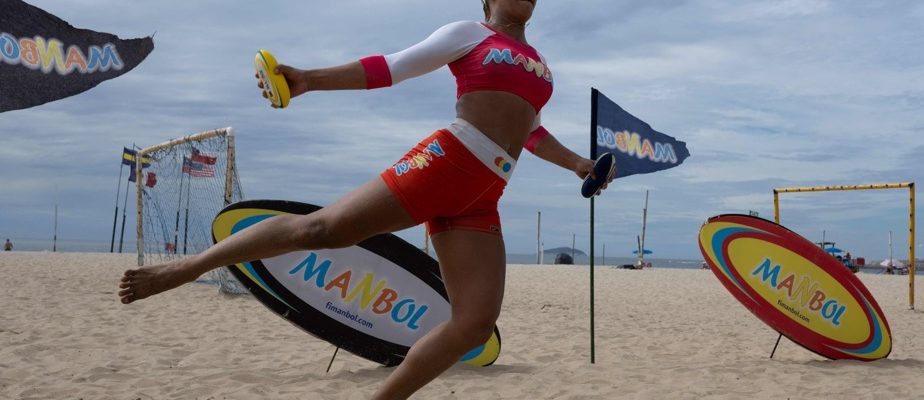(Rio de Janeiro) When they were teenagers, in the Amazon, the Hildebrando brothers had fun throwing mangoes at each other at the same time, one having to catch the fruit thrown by the other before it fell to the ground.
This pastime has been transformed into a real sport, practiced in several regions of Brazil, with very specific rules. And the mangoes have been replaced by oval balloons.
“Manbol”, as this curious discipline has been called, has made its way to the famous Copacabana beach in Rio de Janeiro, where many outdoor sports are practiced.
On the warm sand, the playing area resembles a beach volleyball court, of which there are dozens in Rio. It is a rectangle ten meters long and five meters wide, demarcated by blue ropes, with a net in the middle.

PHOTO PABLO PORCIUNCULA, AGENCE FRANCE-PRESSE
Except that the polyurethane object that flies above this net is not round, but oval, the size of a mango, or about three times smaller than a rugby ball.
The “manbol” tests the players’ reflexes: as the balls are thrown simultaneously, you have to catch the one coming from the opponent just after having sent your own.
Super-fast games
“At first, it was a simple game between us, my brother Rogério would throw me a mango and I would throw it back at him. But, after a while, I said to myself that it would be more fun if we each threw a mango at the same time,” Rui Hildebrando, 44, told AFP.

PHOTO PABLO PORCIUNCULA, AGENCE FRANCE-PRESSE
Rui Hildebrando
Seeing the two teenagers engaging in these lightning-fast games in Belém, in the state of Para, those around them quickly got involved in the game.
Rui Hildebrando then decided to create rules and choose the ideal equipment for the practice of this sport officially born in 2004, when he founded the Brazilian Manbol Confederation.
The rules are simple: like volleyball, you score a point if the ball passed over the net falls into the other camp, or if the opponent sends it out of bounds. If both score in the same rally, the point is replayed.
To win the match, you must win two rounds of twelve points. You can play singles, doubles, or even three players on each side, and each game generally lasts 15 to 25 minutes.
“It’s a very dynamic sport, and the fact that there are two balls makes it a lot of fun. It’s tiring, but with a little practice, you can really enjoy yourself,” enthuses Adriana Mathias, a 46-year-old physical education teacher who has been practicing “manbol” since 2007.

PHOTO PABLO PORCIUNCULA, AGENCE FRANCE-PRESSE
In Copacabana, some passers-by interrupt their walk to attend a few exchanges. “What caught my attention was that it requires great mobility. It seemed interesting to me and I decided to take a look,” says Beti Biaggi, a 53-year-old physiotherapist.
Presented to Lula
This sport has around 2,000 followers, with regional federations in the states of Rio de Janeiro (southeast), Para (north), Ceará (northeast) and in the federal district of Brasilia (central-west), assures Rui Hildebrando, who also reports demonstrations in 11 countries in Europe, Asia and South America.
“Manbol” therefore still remains relatively confidential in Brazil, a huge country of more than 200 million inhabitants, but it was officially recognized as a “sporting discipline” by the Belém municipal council in 2016.
Last June, it was presented by local authorities to President Luiz Inacio Lula da Silva, during an official visit to this city which will host the COP30, the United Nations climate conference, in 2025.
“It is an inclusive sport, which can be practiced by people of all ages and social classes. It works several physical aspects, including reflexes and agility. “Manbol” has everything to grow,” predicts Katia Lessa, president of the Rio “manbol” Federation.
She dreams of seeing her sport become an Olympic discipline, even if it is light years away from the popularity of football or volleyball in Brazil.
